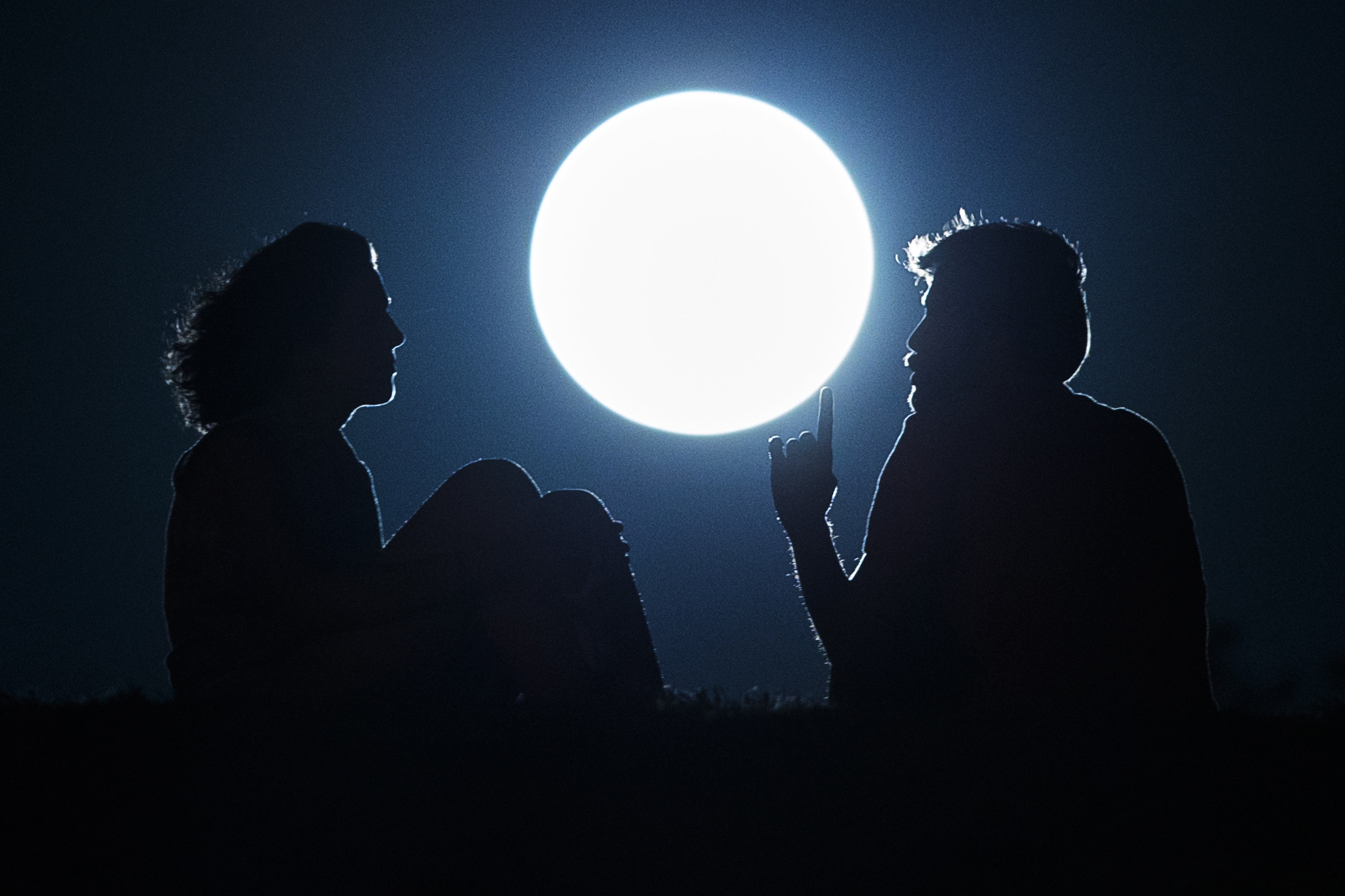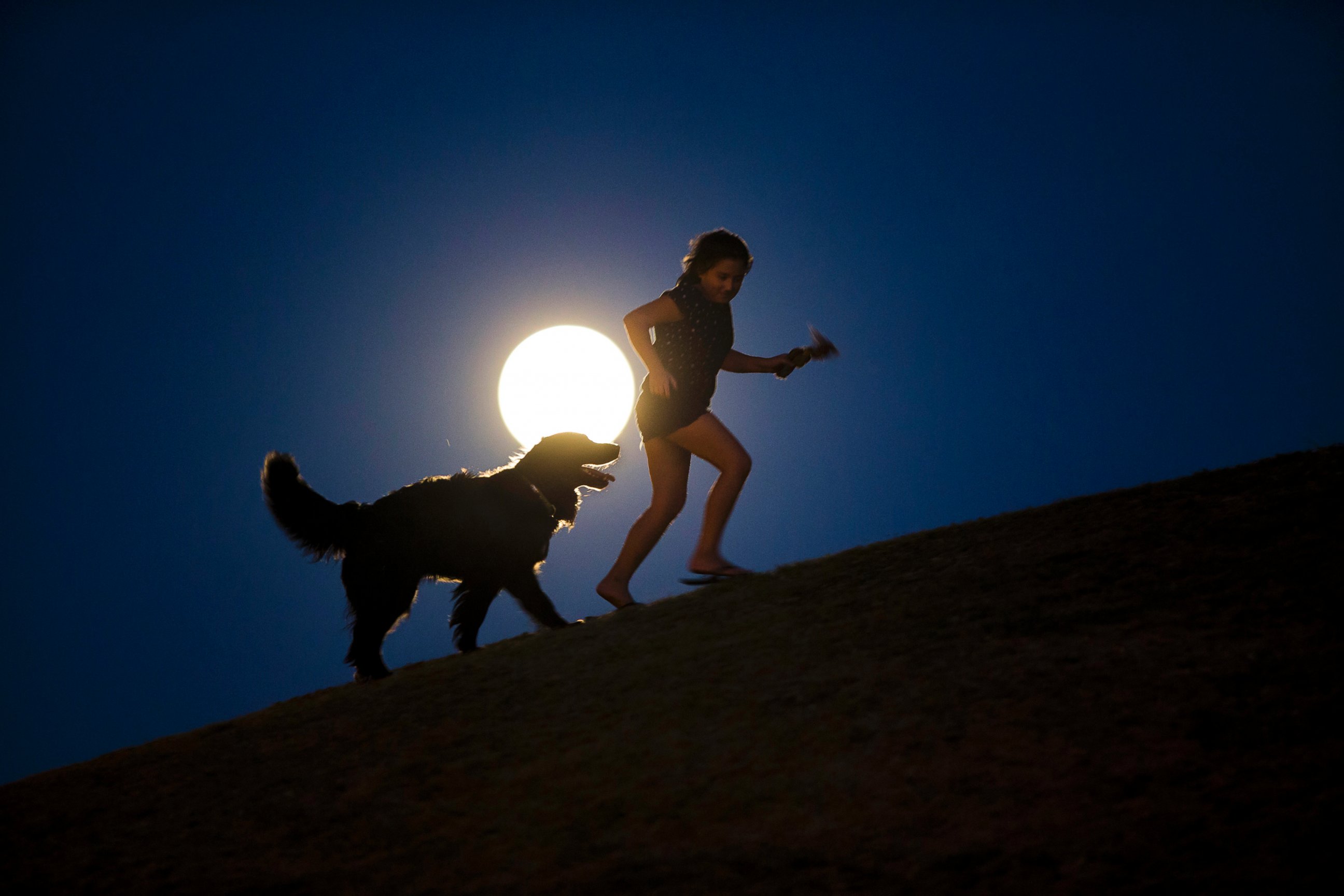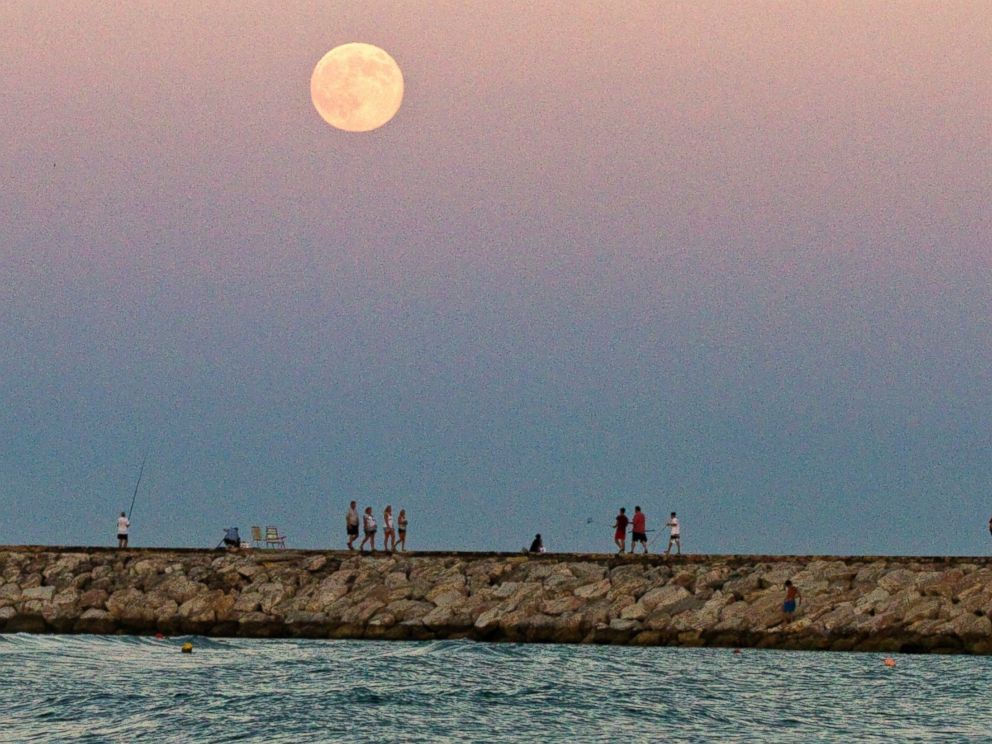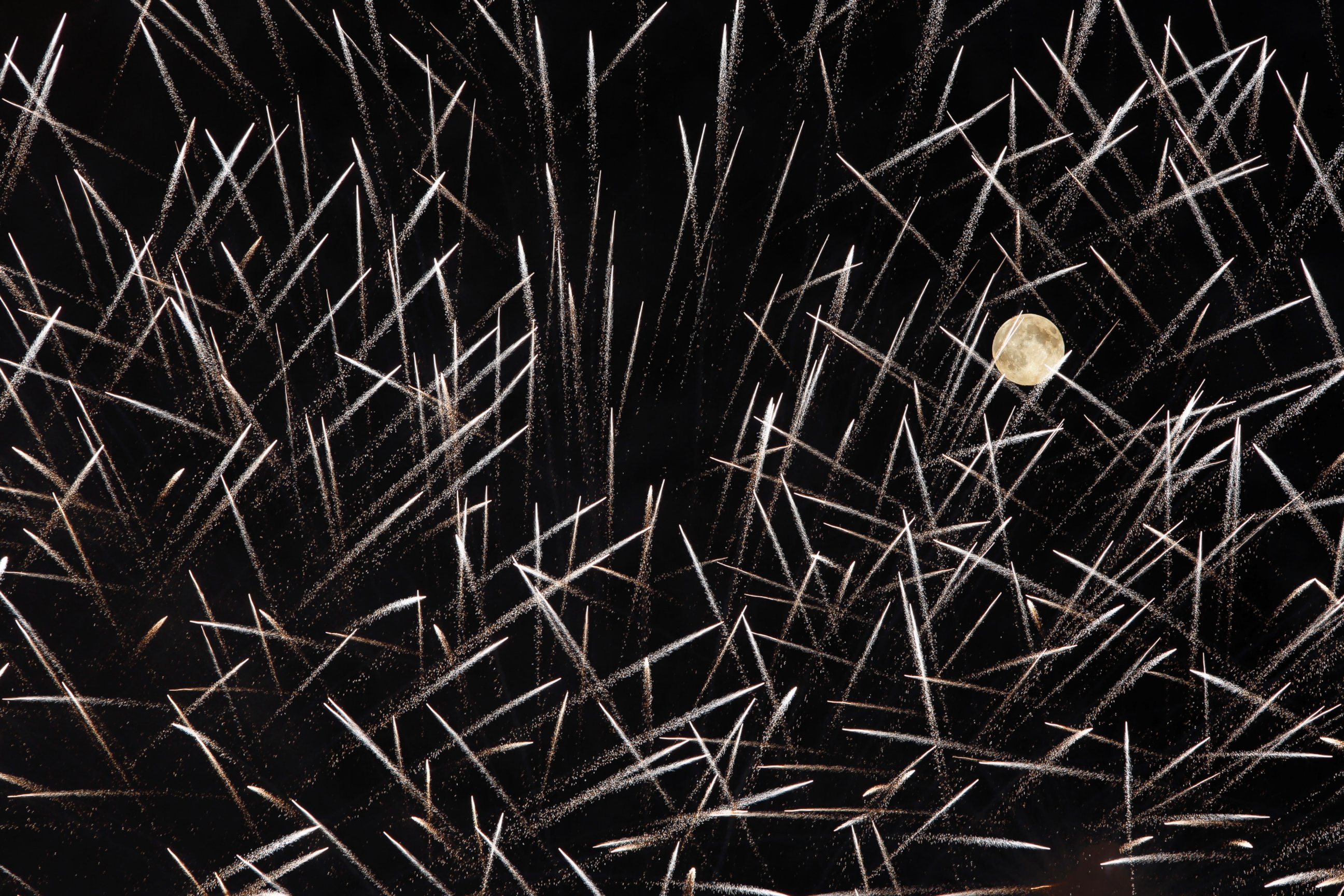Spectacular Photos of the Supermoon
Here's what you missed if you weren't outside last night.
— -- Stargazers who stayed indoors Sunday night missed out on a real treat.
The biggest and fullest moon of the year -- a supermoon -- lit up the night sky.
In case you were busy indoors or had an early bedtime, we have you covered.
Rosetta Spacecraft Reaches Comet After 10-Year Chase
A Planet Made of Diamond, Twice the Size of Earth
Space Smells and 4 Other Things We Learned From Astronaut Mike Hopkins
A supermoon occurs when the Earth is at its closest distance to the moon.

The full moon occurred at 2:09 p.m. EDT, according to Space.com. This means that while heavens watchers in North America were treated to a spectacular moon on the horizon at nightfall, they were technically looking at a waning gibbous moon.

There are four to six supermoons every year, and during those times, the moon is 30,000 miles closer to the Earth than the normal distance. NASA tweeted that the August supermoon was expected to be 14 percent closer to Earth and 30 percent brighter than other full moons.

While this supermoon was billed as the best of 2014, astrophysicist Neil deGrasse Tyson pointed out on Twitter that it was only slightly more superior than the last full moon on July 13.

If you're kicking yourself for missing the free show in the sky, you have another chance.
Put Sept. 8 on your calendar. That's when the next supermoon is expected to grace the heavens.



